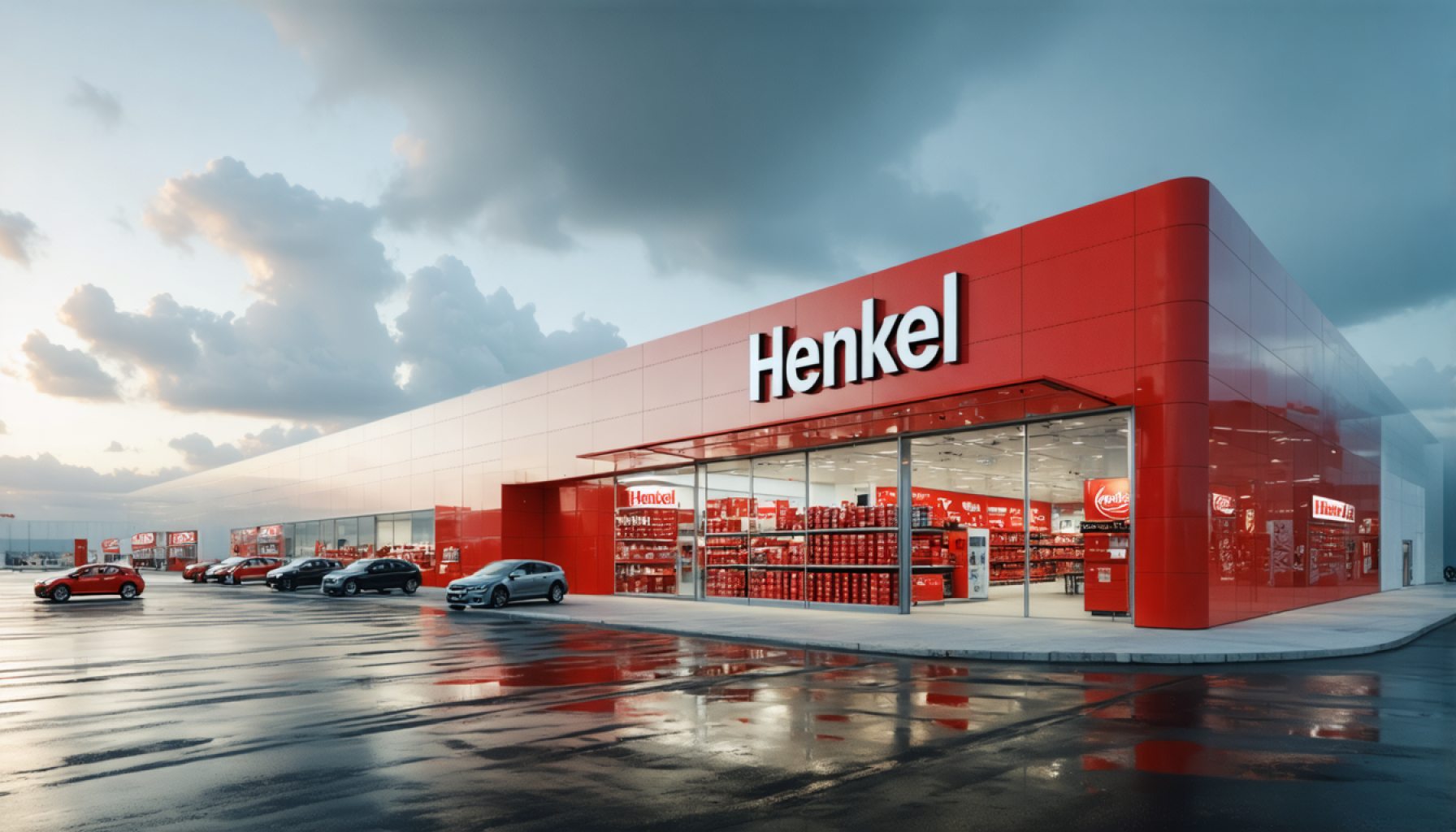- Henkel reported a significant increase in dividends, pledging €2.04 per preferred share, up from €1.85.
- In 2024, Henkel achieved adjusted EBIT of approximately €3.1 billion, rising from €2.56 billion the previous year.
- The company’s strategic focus on Consumer Brands is expected to yield full synergies by the end of 2025.
- For 2025, Henkel anticipates organic sales growth of 1.5% to 3.5% and an EBIT margin of 14.0% to 15.5% amid macroeconomic uncertainties.
- Investor sentiment wavered following Henkel’s announcements, leading to a drop in the company’s share value on the DAX index.
- The first half of 2025 is projected to be slow, with growth expected later in the year through restructuring and innovations.
- Henkel’s story underscores the power of strategic adaptability in navigating challenging market landscapes.
Stride through the bustling corridors of Henkel’s headquarters, and you’ll find a company buoyed by the ambitions of a transformational year. The iconic titan behind brands like Persil and Pritt, Henkel declared a notable uptick in their dividends, promising shareholders €2.04 per preferred share, surging from €1.85 the prior year. Yet, on the horizon looms a narrative shaped by complex geopolitical winds and evolving market landscapes.
2024 unveiled a remarkable chapter for Henkel, showcasing a strategic pivot that saw their refined operational tactics yield a disproportionately high profit relative to revenue. The Düsseldorf-based conglomerate revealed that their adjusted earnings before interest and tax (EBIT) ascended to approximately €3.1 billion, a leap from €2.56 billion the year before. Henkel identified this as the fruit of their Consumer Brands metamorphosis—a grand reconstruction set to culminate in full synergies by the close of 2025.
Despite these triumphs, Henkel’s forecast for 2025 sketches a scene of measured optimism. The company anticipates an organic sales growth span of 1.5% to 3.5%, coupled with an EBIT margin targeted between 14.0% and 15.5%, drawing a modest picture amidst macroeconomic uncertainties. Consumers and investors alike brace for a slow ignition sparked by dampened consumer spending, particularly within the North American market. Yet, Henkel’s resolve remains unaltered. Executives foresee a year with a quieter first half, gaining momentum as restructuring efforts and novel innovations take root in subsequent months.
However, a storm brews. Following the announcement, Henkel’s shares stumbled, casting shadows across the DAX index as investor sentiment wavered. Market dissatisfaction echoed through financial institutions. Analysts noted the potential for continued lackluster performance in early 2025, with Consumer Brands expected to experience a downturn before rebounding later in the year.
This tale of Henkel is not merely about figures and market movements. It is a narrative of a legacy company maneuvering through modern complexities, leveraging its robust strategic foundations to not just survive, but thrive. As such, Henkel embodies a timeless message: In the face of unpredictability, calculated adaptability and strategic foresight hold the keys to enduring success.
Henkel’s Transformational Strategy: What’s Fueling Their Success?
Overarching Strategy and Impact on Shareholders
Henkel’s recent moves indicate a strategic transformation that has garnered attention in the corporate world. The company, known for its iconic brands like Persil and Pritt, has taken bold steps by increasing dividends and adjusting its operational focus. Shareholders have witnessed a dividend rise to €2.04 per preferred share, up from €1.85, reflecting Henkel’s strong financial performance. This increase is part of Henkel’s commitment to rewarding its investors despite the complex geopolitical environment and shifting market dynamics.
Operational Strategy: Consumer Brands Metamorphosis
The strategic revamp within Henkel is largely driven by the metamorphosis of its Consumer Brands division. This reorganization aims to harness full synergies by 2025, which has already translated into increased profitability. The leap in adjusted earnings before interest and tax (EBIT) to approximately €3.1 billion from €2.56 billion the previous year is testament to this transition.
Market Dynamics and Future Projections
Looking ahead to 2025, Henkel remains cautiously optimistic, projecting an organic sales growth rate between 1.5% and 3.5% and an EBIT margin of 14.0% to 15.5%. These targets bear the weight of macroeconomic uncertainty and consumer spending challenges, particularly in North America. The first half of 2025 is expected to be subdued, but momentum is anticipated as restructuring efforts and innovations become more effective later in the year.
Challenges and Investor Sentiment
Despite the positive strides, Henkel’s journey isn’t without its hurdles. After announcing their latest results, Henkel’s stock saw a dip, reflecting dampened investor sentiment and broader market dissatisfaction. Analysts have pointed out the likelihood of Consumer Brands facing initial slow performance in early 2025, with improvements expected as the year progresses.
Industry Trends and Market Positioning
1. Sustainability Initiatives: Henkel has been a pioneer in sustainability, constantly working towards more sustainable products and packaging. This is crucial in a market increasingly driven by environmentally conscious consumers.
2. Digital Transformation: As with many legacy companies, Henkel is investing in digital technologies to streamline operations and enhance customer engagement, which is vital for maintaining a competitive edge.
3. Innovation and R&D: Henkel is increasing its expenditure on research and development to ensure its brands remain at the forefront of their respective markets. Innovations are chiefly directed towards product performance and sustainability.
Practical Tips for Investors and Consumers
– Investors should consider Henkel’s long-term strategy, especially its focus on synergy and consolidation within its Consumer Brands division.
– Consumers can expect more sustainable and innovative products from Henkel’s range, thanks to their committed investment in R&D.
– Those involved in business strategy can learn valuable lessons from Henkel’s adaptive approach to dealing with market unpredictability.
For more insights on Henkel’s global strategies and brand evolution, visit the official Henkel website.
In conclusion, Henkel’s approach exemplifies how calculated strategic transformations, coupled with adaptability and foresight, can navigate even the most complex market landscapes. Investors, consumers, and industry professionals alike should keep an eye on Henkel as it progresses through its ambitious restructuring journey.
